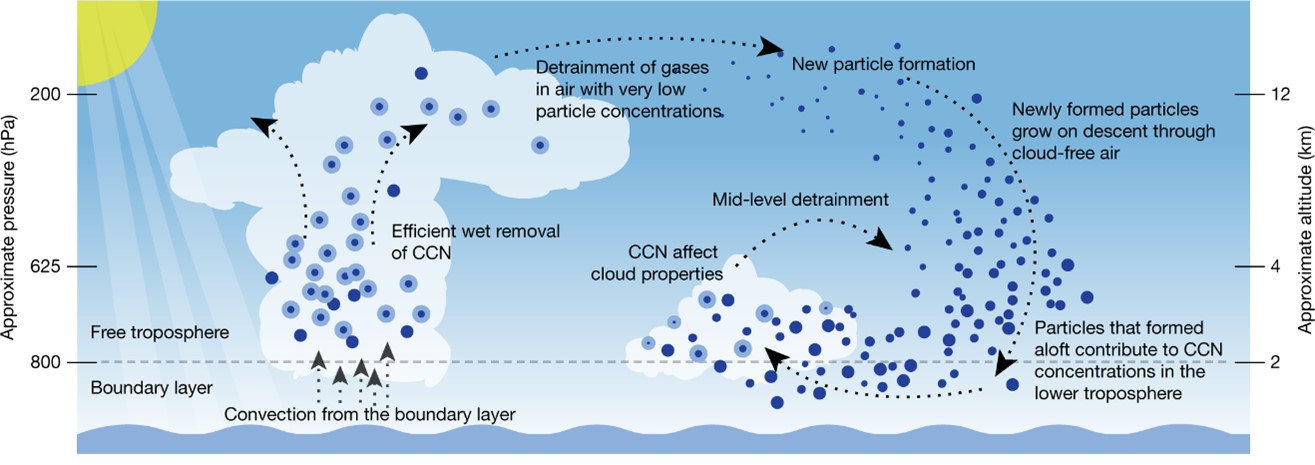CAFE - Pacific
The CAFE-Pacific campaign (Chemistry of the Atmosphere: Field Experiment over the Pacific) with the HALO aircraft is the direct successor of the CAFE-EU and CAFE-Brazil campaigns and will take place in January and February 2024 in Australia. The aircraft will be stationed in Cairns in northeast Australia, and flights over the Indo-Pacific as well as along the Australian coast are planned.
The formation of aerosols in the free troposphere above the Pacific has been observed in multiple measurement campaigns (Perry and Hobbs, 1993; Brock et al., 1995; Clarke et al., 1998; Clarke and Kapustin, 2002; Williamson et al., 2019). However, the chemical mechanisms and involved gases are still mostly unclear. The planned measurement flights with the extensive instrumentation of HALO offer the opportunity to conduct direct measurements in this region of the atmosphere. The objective is to achieve an improved understanding of the photochemical processes and the new particle formation in the tropical troposphere. The oxidation mechanisms as well as the nucleation and growth of particles will be investigated. The Indo-Pacific is especially interesting due to the high efficiency of oxidation processes and the frequent deep convective events which provide a direct link to the stratosphere. Additionally, there is little research on this region compared to the extra tropics.
Further research topics include the comparison between marine conditions and industrially influenced air masses and the direct comparison with the results from CAFE-Brazil over the Amazon rainforest.
The CI-APi-TOF operated by our group has a central role in this project by providing measurements of sulfuric acid, methane sulfonic acid (MSA), highly oxygenated organics (HOMs), as well as Amines and small clusters. Sulfuric acid and MSA could be produced from Dimethylsulfide (DMS), a compound emitted by the ocean and possibly transported upwards by deep convection.
As in previous HALO campaigns, there is a strong cooperation with other research groups that conduct measurements of substances like DMS, carbon monoxide, ozone, or nitrogen oxides.
One special circumstance of this campaign is the climate phenomenon El Nino, which influences the weather in the whole South Pacific. It could lead to decreased precipitation and stronger forest fires in the measurement region, offering the opportunity for additional interesting findings.
With our measurements, we expect to contribute to the understanding of the global aerosol budget and answer many of the open questions revolving around this topic.




